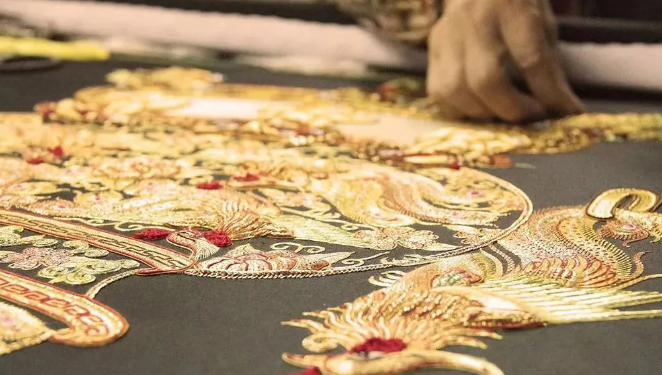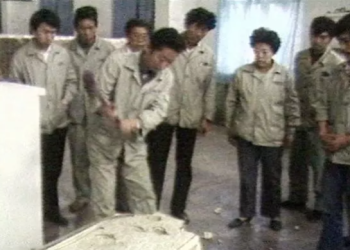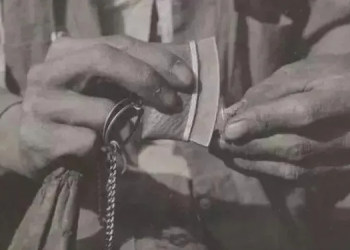Just like porcelain, silk, and tea, embroidery is another exquisite gift China has presented to the world. In ancient China, “men plowed and women wove” was a traditional custom. Women were not expected to work outside the home or attend tutoring classes as they do today. Instead, they learned textile weaving and embroidery from a young age. Known colloquially as “flower stitching,” embroidery was not only a practical skill for daily use and self-expression, but also a means to supplement household income.
Why is Chinese embroidery considered so extraordinary? It’s not merely because of the colorful threads or the intricate designs of birds and flowers. Behind it lies a deep and continuous cultural legacy.
The ancient embroiderers may not have realized that each stitch they made would become part of a heritage stretching back thousands of years. Their threads wove vivid scenes from the hearts of many, reflected changing aesthetics and spiritual pursuits across dynasties, and became bridges for intercultural exchange.
As early as 4,000 to 5,000 years ago, the ingenious and hardworking Chinese people began raising silkworms and reeling silk. This gave rise to silk textiles and gradually to the art of embroidery. The love of beauty is timeless—China’s sartorial system, established over 4,000 years ago, already dictated that “robes shall be painted and skirts embroidered.”When we trace the history of embroidery, a clear and complete lineage unfolds before us.
During the Spring and Autumn and Warring States periods, embroidery and brocade weaving made significant technical strides. Among the upper class, wearing elaborately embroidered garments became a mark of status and refinement.
In 1972, archaeologists uncovered three types of Han Dynasty embroidery—Xinqi , Chengyun , and Changshou —from Tomb No. 1 of Mawangdui in Changsha, Hunan Province. Patterns such as cornelian cherry , clouds, and checkerboard motifs were also found. The specific naming of these techniques suggests that, even then, embroidery had already reached a level of mastery that could only be described as sublime.
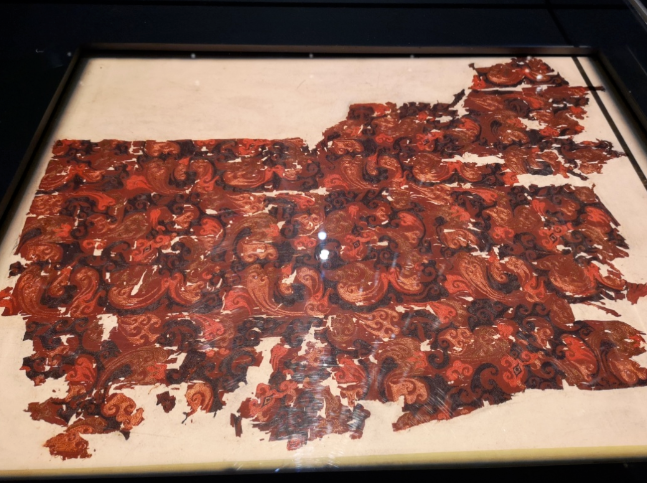
During the Northern and Southern Dynasties, the rise of Buddhism in China greatly expanded the themes of embroidery. Devout believers spared no expense in embroidering Buddhist images as a way to accumulate merit and virtue.
By the Sui and Tang dynasties, embroidery and weaving had spread widely across the country, and the craft of embroidery became increasingly competitive. Many women were expected to learn “nühong” (traditional female needlework), often starting their training as young children.
In the Song dynasty, the royal court established the “Wenxiu Institute,” which oversaw the creation of embroidery. A specialized embroidery section within the imperial painting academy was dedicated to replicating masterpieces by renowned court artists. The stitching techniques aimed to capture the brushstrokes, ink tones, and spirit of the original works, striving for near-perfect reproductions. Nearly ten types of basic stitches evolved into hundreds of techniques, transforming embroidery into a refined form of visual art.During the period of multiple coexisting regimes—Liao, Song, Western Xia, and Jin—embroidery integrated the aesthetics of northern nomadic cultures with the refined traditions of the Central Plains, leading to new developments through cultural fusion.
In the Yuan dynasty, embroidery techniques became more mature. The most distinctive practice of this period was the use of gold threads to decorate everyday items and ornaments.In the Ming dynasty, the silk industry in Jiangnan (South of the Yangtze River) flourished. The imperial court established separate textile bureaus in Nanjing and Beijing to meet the unprecedented demand for royal embroidery, ceremonial robes, and rank badges. With increased commercialization, embroidery became more secular and widespread.The Qing dynasty saw another leap forward in embroidery, marked by a dazzling variety of embroidered goods, intricate designs, luxurious materials, highly skilled craftsmanship, and soaring market prices.

A milestone in Chinese embroidery came during the late Qing and early Republican period with the publication of the book Xuehuan Xiupu . This work comprehensively documented embroidery tools, techniques, aesthetic principles, and key considerations, elevating embroidery from mere artistic expression to a systematic theoretical discipline.
The “Four Great Embroideries” are recognized as the finest representatives of Chinese embroidery:
Su embroidery (Suzhou) is delicate and refined;
Shu embroidery (Sichuan) is vivid and three-dimensional;
Yue embroidery (Guangdong) is ornate and splendid;
Xiang embroidery (Hunan) captures both form and spirit.
Each needle and thread carries the unparalleled charm of Chinese traditional culture.Yet the legacy of Chinese embroidery goes far beyond the “Four Great Embroideries.” Across China’s vast territory, embroidery thrives in countless regional styles, each infused with local customs and ethnic heritage. These traditions together weave a rich tapestry of cultural integration.
For the Miao people, embroidery and decorative stitching are essential elements of everyday life. Miao embroidery features intricate compositions and often combines flat stitches, lock stitches, and braid stitches, influencing neighboring ethnic groups such as the Yao, Bouyei, and Dong.In Sandu Shui Autonomous County of Guizhou Province, the Shui people use horsehair wrapped in silk thread to create embossed embroidery patterns of dragons, phoenixes, fish, butterflies, gourds, and pumpkins.
The Tujia ethnic group’s “coiled embroidery,” originating from the northwestern highlands, boasts a thousand-year-old history. Its color coordination and stitching methods reflect strong ethnic and regional characteristics. Tujia women complete embroidery entirely by hand without a frame, using a two-thread, two-hand technique. The results are intricate, durable, and resistant to fading or fraying.
Yi embroidery is known for its bold color contrasts;
Yao embroidery is recognized for its geometric designs and fine line work;
Uyghur embroidery is praised for its delicate floral patterns and distinctive decorative style;
Tibetan and Qiang embroidery, passed down in Aba and Ganzi regions of Sichuan, merge Tibetan weaving and floral embroidery with Qiang ethnic needlework—both designated as national intangible cultural heritages.As ethnic groups continue to interact and integrate, embroidery techniques across cultures increasingly influence, complement, and enrich one another.

The recently concluded 2024 Paris Olympics not only delivered a spectacular sports event but also showcased the unique charm of “China Red” to the world. If you paid close attention, you would have noticed the intricate details embedded in the Chinese athletes’ podium outfits. These ceremonial uniforms incorporated traditional elements such as dragon scales and dragon whiskers, along with embroidery craftsmanship, subtly conveying the profound depth of Chinese traditional culture at this moment of global spotlight.
In Chinese culture, embroidery is imbued with rich symbolic meanings—representing good fortune, happiness, and harmony. Today, modern materials such as yarn, silk threads, and wool are increasingly used in place of traditional gold, silver, and pure silk threads. Ethnic embroidery styles like Dong ethnic group’s lock-stitch and seed embroidery are now combined with traditional weaving techniques to create framed artwork. Embroidery also appears on runway fashion shows, trendy apparel, and urban streetwear, proving that this ancient craft continues to evolve and flourish in modern design.
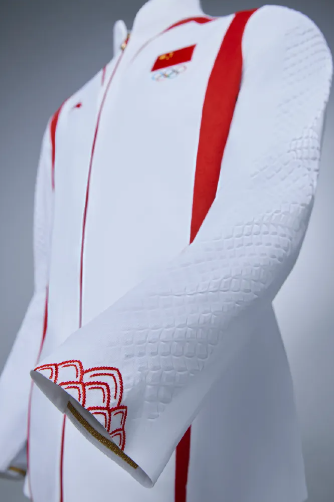
An increasing number of people, guided by modern aesthetics, are stepping into the world of traditional embroidery. At the same time, more and more embroidery artisans are embracing the mission of creative transformation and innovative development, breathing fresh fashion and intellectual depth into Chinese embroidery. These efforts have allowed this thousand-year-old intangible cultural heritage to truly “flow” with the times and be passed down into the future.
Thanks to these modern innovations, Chinese embroidery has stepped beyond national borders and captured global attention. The Miao embroidery pattern known as Sì Yìn Miáo (Four-Stamped Miao) made a stunning debut at Milan Fashion Week; Yao Jianping’s Suzhou embroidery masterpiece “Palace Lady Playing Cuju” is now permanently exhibited at the Olympic Museum at the International Olympic Committee headquarters; other Su embroidery works such as “Cat” and “Goldfish” have been presented as national gifts to foreign leaders on multiple occasions. Chinese embroidery is being seen—and celebrated—by the world.

In the vast and enduring river of Chinese civilization, embroidery has grown like vines, drawing nourishment from every dynasty and every ethnic group, embodying profound emotional resonance and rich cultural meaning. As a living testament to the heritage and continuity of Chinese civilization, embroidery carries within it the essence of generations.
With the global rise in appreciation for Chinese culture, and the continuous emergence of embroidery works that blend modern aesthetics with practical functionality, the charm of Chinese embroidery is destined to shine ever more brilliantly on the world stage.
